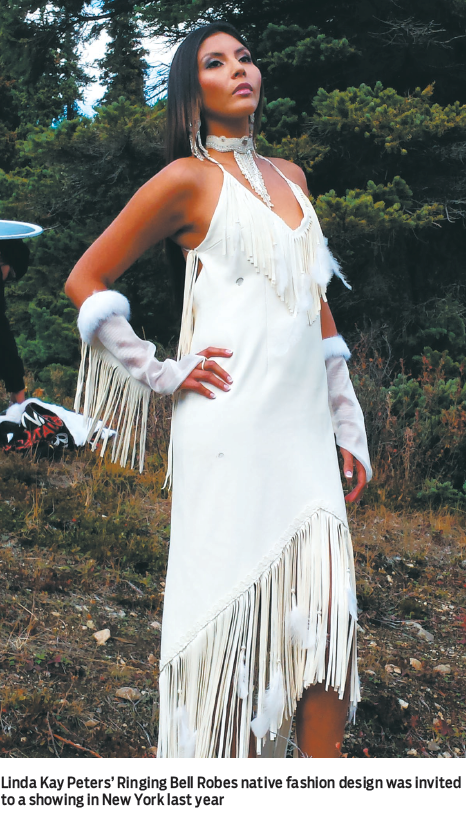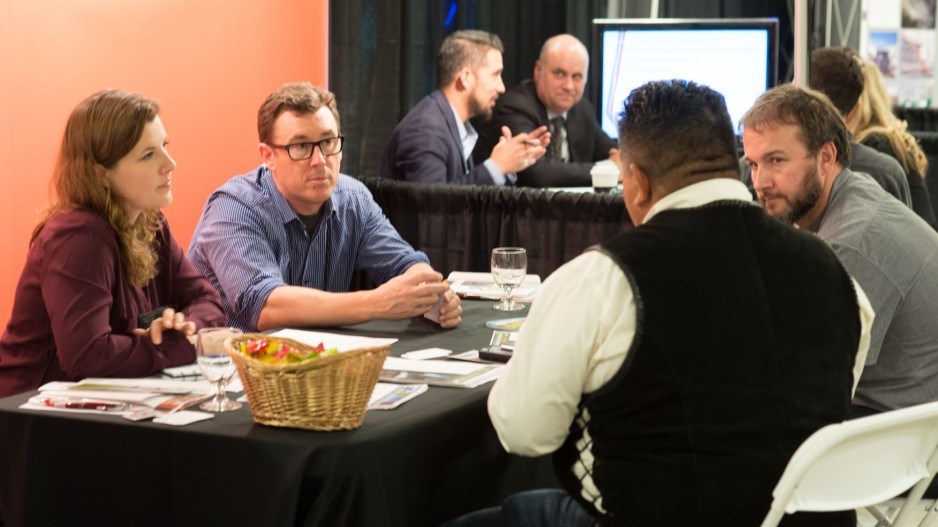A major challenge for Lower Mainland businesses is land costs. Even further out, the Fraser Valley is constrained by mountains to the north, the U.S. border to the south and a whole lot of land in between that is off limits to development because it’s locked in the agricultural land reserve (ALR).
But there’s another kind of reserve in the Fraser Valley – Stó:lo- First Nations reserves – and Stó:lo- Community Futures wants the B.C. business community to know that they are open for business.
“We are the largest landowner in the Fraser Valley,” said Stó:lo- Community Futures general manager Mike Watson.
“The City of Chilliwack … has about 50-plus or minus available acres of commercial land now available for business. The First Nations communities in Chilliwack have over 3,000 acres of available land for development.”
He added that taxes and development cost charges paid on the land are shared with the municipality.
“So it’s a community benefit that flows to both the non-aboriginal and the aboriginal community,” he said.
There are now more than 250 businesses operating in Stó:lo- territory, which extends from Fort Langley to Yale and includes 24 bands, many of which have been cultivating new business ventures.
In a business match event held in the last week of October in partnership with Raven Events and Communications, more than 200 aboriginal and non-aboriginal business leaders were brought together to explore new business opportunities among the Stó:lo-.
One of the payoffs to come directly from that event was $1.6 million in new funds from banks and credit unions for business loans.
Historically, banks were reluctant to provide loans and mortgages on reserve land, which is owned in trust by the federal government. But that has changed, as new models of governance on reserve lands have been implemented.
In addition to the business loans that Stó:lo- Community Futures provides to new business ventures, banks provide leasehold mortgages to help finance new development on reserve lands, like the Eagle Landing shopping mall in Chilliwack.
The Squiala First Nation is the majority owner of the mall, which is anchored by Walmart, Cineplex and Home Depot.
Contrary to popular belief, there’s no real tax benefit to businesses operating on reserve lands. Only status First Nations who earn a living on reserve land receive tax exemptions. Even aboriginal businesses that are incorporated pay taxes on reserve land, Watson said.
“None of these tenants would have any [tax] benefits to being on reserve,” said Squiala Chief David Jimmie. “It was really a matter of location.”
Reserve land is not subject to the ALR – a huge advantage in the Fraser Valley, where so much farmland is off limits to development.
There are more than 250 aboriginal businesses in the Stó:lo- territory, about 45% of which are based on some form of community ownership. Many have received assistance from Stó:lo- Community Futures in the form of loans and entrepreneur training programs.
But it’s not just Stó:lo- people who enjoy that support. Many of the businesses operating in Stó:lo- territory aren’t Stó:lo-, but Métis.
Louis De Jaeger, owner of Bravo Restaurant and Lounge in Chilliwack and a director for Stó:lo-Community Futures, is one of the region’s many Métis business owners.
“The Stó:lo- are very inviting,” De Jaeger said. “They always have been. They help all aboriginal business on Stó:lo- territory.”
Linda Kay Peters is another non-Stó:lo- entrepreneur who has received support from Stó:lo- Community Futures and the Stó:lo- community in general.

Born in Ontario to an Ojibway mother and Cree father, she moved to Hope with her family when she was 16 and later married into the Stó:lo- community. In 1996, she started making clothes with native designs as a hobby and now has her own native fashion label: Ringing Bell Robes.
She got a small loan from Stó:lo- Community Futures last year to help her attend higher-end fashion shows, hire some part-time help and buy equipment and fabric.
“Stó:lo- [Community Futures] has been a huge support for motivating me and encouraging me and promoting me,” Peters said.
In 2013 she was invited to the National Aborginal Fashion Week in Regina, which resulted in her being invited to Couture Fashion Week in New York in September 2013.
“We were the first aboriginal designers that they had had at Couture Fashion Week,” Peters said.
Another homegrown business that Stó:lo- Community Futures helped get off the ground is Sandra Pederson’s Bear Image Productions, a video production studio.
Pederson’s mother is from the Tzeachten First Nation. Most of her business comes from other Stó:lo- businesses and organizations.
“Stó:lo- Community Futures have always been there for us,” she said. “They’ve guided us on possibly looking for grants to do our own documentaries and such.”




